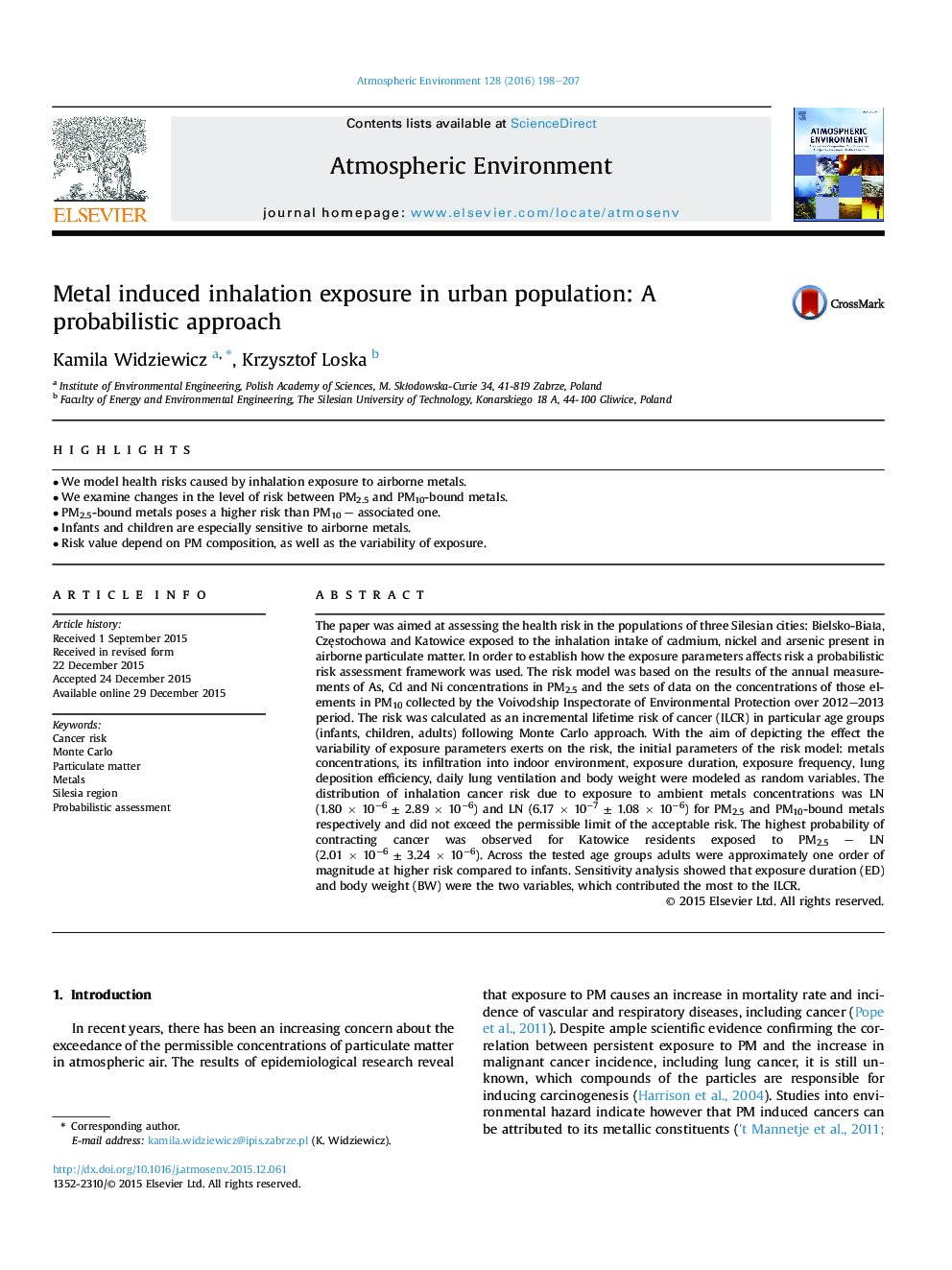| Article ID | Journal | Published Year | Pages | File Type |
|---|---|---|---|---|
| 6336747 | Atmospheric Environment | 2016 | 10 Pages |
Abstract
The paper was aimed at assessing the health risk in the populations of three Silesian cities: Bielsko-BiaÅa, CzÄstochowa and Katowice exposed to the inhalation intake of cadmium, nickel and arsenic present in airborne particulate matter. In order to establish how the exposure parameters affects risk a probabilistic risk assessment framework was used. The risk model was based on the results of the annual measurements of As, Cd and Ni concentrations in PM2.5 and the sets of data on the concentrations of those elements in PM10 collected by the Voivodship Inspectorate of Environmental Protection over 2012-2013 period. The risk was calculated as an incremental lifetime risk of cancer (ILCR) in particular age groups (infants, children, adults) following Monte Carlo approach. With the aim of depicting the effect the variability of exposure parameters exerts on the risk, the initial parameters of the risk model: metals concentrations, its infiltration into indoor environment, exposure duration, exposure frequency, lung deposition efficiency, daily lung ventilation and body weight were modeled as random variables. The distribution of inhalation cancer risk due to exposure to ambient metals concentrations was LN (1.80 Ã 10â6 ± 2.89 Ã 10â6) and LN (6.17 Ã 10â7 ± 1.08 Ã 10â6) for PM2.5 and PM10-bound metals respectively and did not exceed the permissible limit of the acceptable risk. The highest probability of contracting cancer was observed for Katowice residents exposed to PM2.5 - LN (2.01 Ã 10â6 ± 3.24 Ã 10â6). Across the tested age groups adults were approximately one order of magnitude at higher risk compared to infants. Sensitivity analysis showed that exposure duration (ED) and body weight (BW) were the two variables, which contributed the most to the ILCR.
Related Topics
Physical Sciences and Engineering
Earth and Planetary Sciences
Atmospheric Science
Authors
Kamila Widziewicz, Krzysztof Loska,
